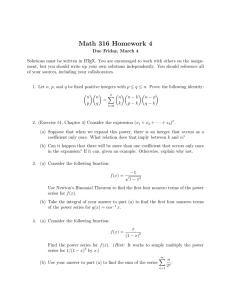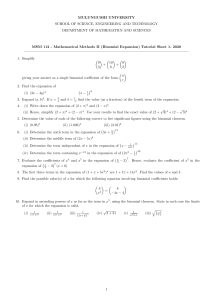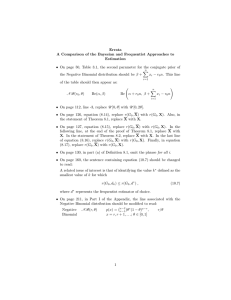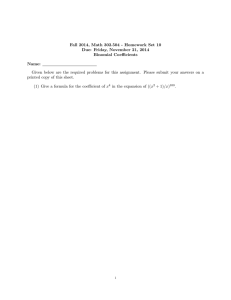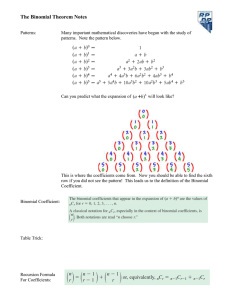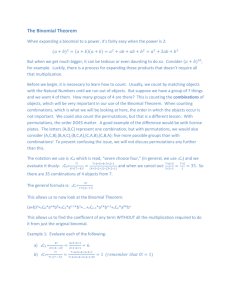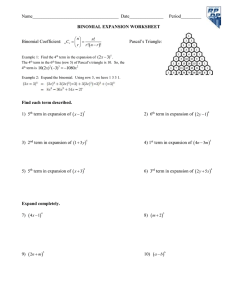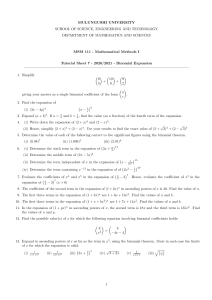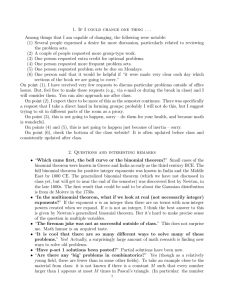Permutations, Combinations, Binomials
advertisement
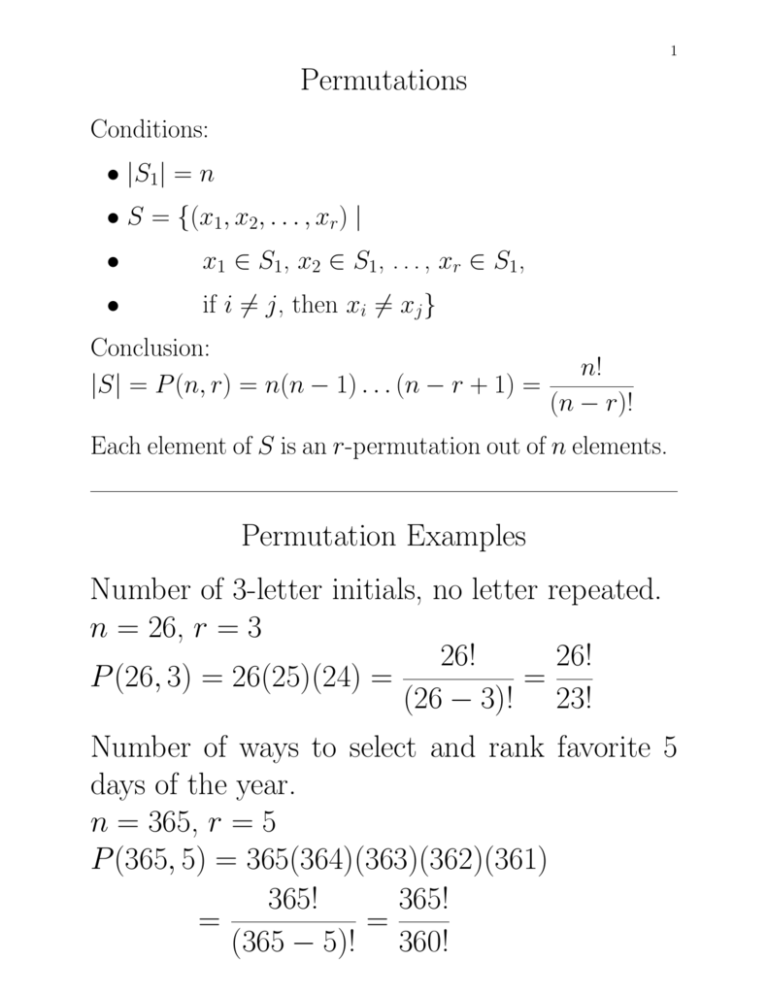
1
Permutations
Conditions:
• |S1| = n
• S = {(x1, x2, . . . , xr ) |
•
x 1 ∈ S1 , x 2 ∈ S1 , . . . , x r ∈ S1 ,
•
if i 6= j, then xi 6= xj }
Conclusion:
|S| = P (n, r) = n(n − 1) . . . (n − r + 1) =
n!
(n − r)!
Each element of S is an r-permutation out of n elements.
Permutation Examples
Number of 3-letter initials, no letter repeated.
n = 26, r = 3
26!
26!
P (26, 3) = 26(25)(24) =
=
(26 − 3)! 23!
Number of ways to select and rank favorite 5
days of the year.
n = 365, r = 5
P (365, 5) = 365(364)(363)(362)(361)
365!
365!
=
=
(365 − 5)! 360!
2
Combinations
Conditions:
• |S1| = n
• S = {{x1, x2, . . . , xr } |
•
x 1 ∈ S1 , x 2 ∈ S1 , . . . , x r ∈ S1 ,
•
if i 6= j, then xi 6= xj }
n!
Conclusion: |S| = C(n, r) =
r!(n − r)!
Each element of S is an r-combination out of n
elements.
Combination Examples
Number of 3-letter sets.
n = 26, r = 3
26!
26!
26(25)(24)
C(26, 3) =
=
=
3!(26 − 3)! 3! 23!
1(2)(3)
Number of bit strings of length 10 with two 1s
and eight 0s.
n = 10, r = 2 or r = 8
10!
10(9)
C(10, 2) = C(10, 8) =
=
2! 8!
1(2)
3
Binomial Coefficients
Often, C(n,
r) is written as a binomial coeffi!
cient nr . They occur as coefficients in the expansion of (a + b)n.
n
n
Binomial Theorem: (x + y)n = Σ xn−k y k
k=0 k
Proof: The coefficient of xn−k y k is the number
of ways y can be chosen k times from n terms.
This is the number of k-combinations out of n.
Corollary:
n n k
n n n−k k
x = (1 + x)n
Σ x = Σ 1
k=0 k
k=0 k
n n
It follows that: Σ = (1 + 1)n = 2n
j=0 k
n n
k
n
n
Σ (−1) = (−1 + 1) = 0 = 0
k=0 k
n n k
n
n
Σ 2 = (2 + 1) = 3
k=0 k
4
Pascal’s Identity
n
+
1
n
n
=
Theorem:
+
k
k−1
k
Proof: Let T be a set with n + 1 elements.
Let a ∈ T and S = T − {a}.
A subset of T of size k either contains a and
k − 1 elements from S or omits a and contains
k elements from S. (sum rule)
The number orsubsets
from S of size k − 1 and
n n
k is
+
k−1
k
Pascal’s Triangle
0
0
1
1 1
0 1
2
2
2
0
1
2
3
3
3
3
0
1
2
3
4
4
4
4
4
0 1 2 3 4
1 1
1 2 1
1 3 3 1
1 4 6 4 1
